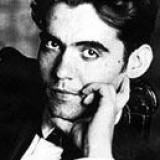My mentor
-
Michael D Nalley
10 years agoShare on twitter Share on facebook Share on email Share on print Share on gmail More Sharing Services
Thomas Merton (1915-1968), a Trappist monk, was one of the most well-known Catholic writers of the 20th century. He was the author of more than 60 books, including the story of his conversion, Seven Storey Mountain, a modern spiritual classic. Yet Merton is a controversial figure. In the last year of his life, he wrote in his journal while traveling through Asia:
Last night I dreamed I was, temporarily, back at Gethsemani. I was dressed in a Buddhist monk's habit, but with more black and red and gold, a "Zen habit," in color more Tibetan than Zen . . . I met some women in the corridor, visitors and students of Asian religion, to whom I was explaining I was a kind of Zen monk and Gelugpa together, when I woke up. (Asian Journal, 107)
A Trappist dreams of being a Buddhist monk? My grandparents recall an American impersonator named Lon Chaney (1883-1930) who was such a master at changing his screen identity that he came to be called "the man with a thousand faces." Fr. Thomas Merton was a man of a thousand lives. He was at one time a womanizer, a member of the Young Communist League, an English student at Columbia, a peace activist, an English teacher at St. Bonaventure University, and a social work volunteer. He was an orphan, the father of a child, a Catholic convert, a Trappist monk, a priest, a poet, a writer, and some describe him as a Zen Buddhist. It is difficult to distill the essence of Thomas Merton: He and his works are complex. -
ddavidd
10 years agoMY God " Thomas Merton!!" I preach exactly the same thing. I was having the same discussion with my friend the other time and when I said about communism is exactly the idea of the state of (true) Zion and why exactly the communism went wrong, they were laughing at me that that simile is totally a figment of my imagination.
It makes me happy to know that I am not alone.

